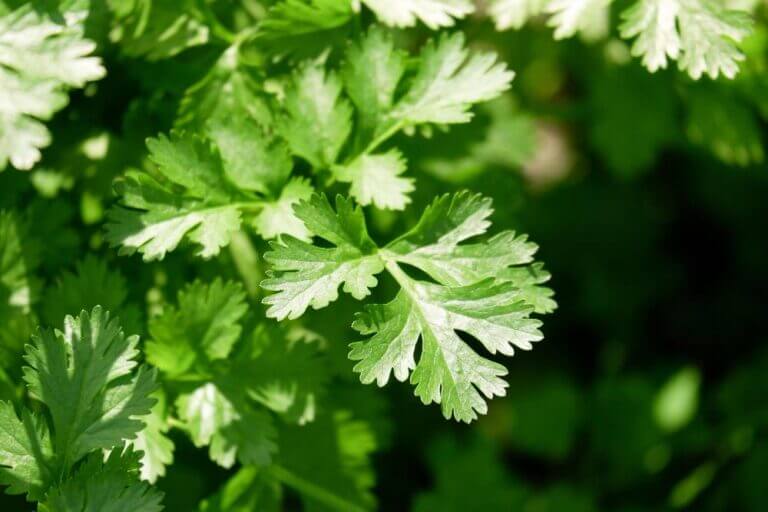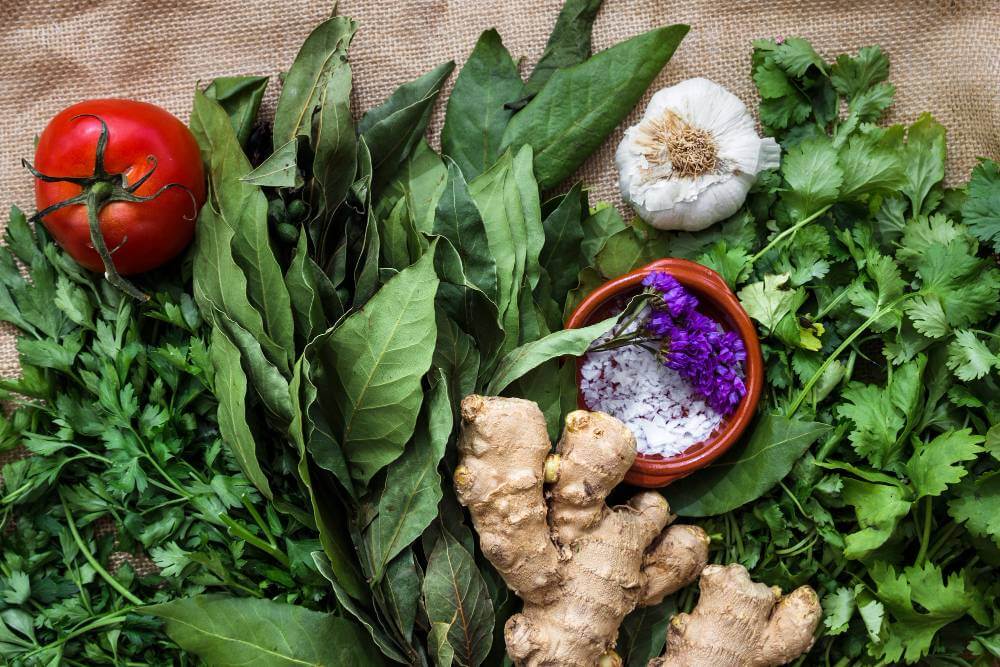Welcome, fellow gardeners, to a journey of cilantro discovery! In this comprehensive guide, I’ll be sharing my pro tips for growing cilantro like a seasoned gardener. From selecting the perfect seeds to nurturing robust foliage, get ready to elevate your cilantro game to new heights.
Benefits and Typical Uses: Cilantro’s Flavorful Delights
Before we dive into the nitty-gritty of growing cilantro, let’s savor the enticing array of benefits and uses this versatile herb offers. Not only does cilantro add a burst of freshness to culinary creations, but it also boasts an impressive array of health benefits. From its detoxifying properties to its rich antioxidant content, cilantro is a true powerhouse herb. Whether you’re garnishing tacos with a sprinkle of fresh cilantro, infusing soups with its vibrant flavor, or crafting zesty salsa verde, cilantro adds a delightful punch to every dish.
Exploring Cilantro’s Different Varieties
Cilantro, also known as coriander in some regions, comes in various varieties, each offering its own unique flavor profile and culinary possibilities. From the classic Santo cilantro with its bright, citrusy notes to the robust flavor of Slow Bolt cilantro, there’s a variety to suit every palate and culinary adventure. Explore the nuances of Vietnamese cilantro, perfect for adding a peppery kick to dishes, or embrace the delicate flavor of Delfino cilantro with its feathery foliage. With such a diverse array of options, you’ll never run out of cilantro-inspired culinary creations to explore.
Annual or Perennial: Understanding Cilantro’s Lifecycle
Cilantro is typically grown as an annual herb, meaning it completes its lifecycle within one growing season. In most climates, cilantro will bolt and go to seed as temperatures rise, signaling the end of its productive phase. However, in cooler regions with mild winters, cilantro may behave as a short-lived perennial, persisting through the winter months and regrowing the following spring. While cilantro’s perennial tendencies are limited, providing protection from frost and cold temperatures can help prolong its lifespan, allowing for successive harvests.
Preferred Planting Season: Timing Is a Crucial Key
When it comes to planting cilantro, timing is crucial for success. Cilantro prefers cooler temperatures, making it best suited for planting in the spring or fall. In warmer climates, cilantro may bolt prematurely in the heat of summer, so aim to sow seeds or transplant seedlings when temperatures are mild. Additionally, staggered plantings every few weeks ensure a continuous harvest throughout the growing season, allowing you to enjoy fresh cilantro year-round.
Sun or Shade: Cilantro’s Light Preferences Unveiled
When it comes to cilantro’s light preferences, the answer lies somewhere in between full sun and shade. While cilantro thrives in cooler temperatures, it benefits from receiving partial sunlight, especially in warmer climates. Aim to provide cilantro with at least 4-6 hours of sunlight per day, ideally in the morning or late afternoon when the sun’s intensity is gentler. In hot climates, cilantro may appreciate some shade during the hottest part of the day to prevent stress and bolting. Conversely, in cooler climates, cilantro can tolerate full sun exposure without issue. Finding the right balance of sunlight is key to promoting healthy growth and preventing premature bolting, ensuring a continuous harvest of fresh cilantro.
Winter Care: Nurturing Cilantro Through the Chill
For those in colder climates, winter presents unique challenges for cilantro cultivation. While cilantro prefers cooler temperatures, it can be sensitive to frost and freezing conditions. To help cilantro survive the winter months, consider providing protection from the elements, such as covering plants with frost cloth or bringing containers indoors during extreme cold snaps. Alternatively, sow cilantro seeds in late summer or early fall for a winter harvest, allowing plants to establish before temperatures drop. With proper care and protection, cilantro can continue to thrive even in the chilliest of winters.
Seeds vs. Seedlings: The Great Debate
The age-old question: to sow seeds or to start with seedlings? While both methods have their merits, each comes with its own set of considerations. Sowing cilantro seeds directly into the garden bed offers the satisfaction of nurturing plants from their earliest stages and allows for a wider selection of cilantro varieties. Alternatively, starting with seedlings provides a head start on the growing season and reduces the risk of potential setbacks.
Growing Cilantro from Cuttings
For those seeking an alternative method of propagation, growing cilantro from cuttings offers a convenient and efficient option. To propagate cilantro from cuttings, select healthy stems with several pairs of leaves intact. Trim the stems just below a leaf node and remove any lower leaves to expose the nodes. Place the cuttings in a container filled with water, ensuring that the nodes are submerged while the leaves remain above the waterline. Change the water regularly to prevent stagnation and monitor the cuttings for root development. Once roots have formed, transplant the cuttings into a well-draining potting mix, and continue to care for them as you would seed-grown cilantro. With patience and care, you’ll soon enjoy a bountiful harvest of fresh cilantro from your propagated cuttings.
Growing Cilantro: Indoor vs. Outdoor Adventures
The choice between growing cilantro indoors or outdoors depends on various factors, including climate, space availability, and personal preference. Indoor cultivation offers the advantage of year-round access to fresh cilantro, regardless of outdoor weather conditions. It’s ideal for those living in colder climates or urban settings with limited outdoor space. To grow cilantro indoors successfully, ensure it receives at least six hours of sunlight per day or supplement it with grow lights. Use well-draining potting soil and provide consistent watering to keep the soil evenly moist. Outdoor cultivation, on the other hand, is preferred by those with ample garden space and favorable growing conditions. Cilantro thrives in cooler temperatures and can tolerate partial shade in warmer climates. Directly sow seeds or transplant seedlings into a sunny spot with fertile, well-draining soil. With proper care and attention, both indoor and outdoor cilantro cultivation can yield bountiful harvests of fresh, flavorful herbs for culinary delights.
Best Soil for Cilantro: Creating the Perfect Growing Medium
Choosing the right soil is essential for cilantro’s success. Cilantro thrives in well-draining soil with a neutral to slightly acidic pH. Amend heavy clay soils with organic matter such as compost or aged manure to improve drainage and fertility. Additionally, ensure that the soil is loose and friable, allowing for healthy root development and optimal nutrient uptake. Whether planting in containers or in the garden bed, providing cilantro with the right soil conditions sets the stage for a bountiful harvest.
Growing Cilantro in a Pot: Container Cultivation Made Easy
Don’t let limited outdoor space deter you from growing cilantro – containers offer a convenient solution for urban gardeners or those with small patios. When growing cilantro in pots, choose a container with sufficient drainage holes to prevent waterlogging. Fill the pot with a high-quality potting mix specifically formulated for herbs, ensuring it’s well-draining and nutrient-rich. Place the pot in a sunny location, ideally receiving at least six hours of sunlight per day, and water regularly to keep the soil evenly moist. With proper care and attention, you can enjoy a continuous harvest of fresh cilantro right at your fingertips.
Hydroponic Cultivation: Growing Cilantro Without Soil
For those seeking innovative growing methods, hydroponic cultivation offers an exciting alternative to traditional soil gardening. Growing cilantro hydroponically involves suspending the plant’s roots in a nutrient-rich water solution, allowing for faster growth rates and higher yields. To get started, select healthy cilantro cuttings and place them in a container filled with aerated water enriched with hydroponic nutrients. Monitor the water’s pH levels and nutrient concentrations regularly, ensuring they remain within the optimal range for cilantro growth. With proper care and attention to detail, hydroponic cilantro cultivation can yield impressive results, providing a continuous supply of fresh herbs year-round.
Watering Instructions: Quenching Cilantro’s Thirst
Proper watering is essential for cilantro’s growth and development, as it prefers consistently moist soil to thrive. Water cilantro plants deeply but infrequently, allowing the top inch of soil to dry out between waterings. Avoid overwatering, which can lead to root rot and other issues, especially in poorly draining soil. During hot weather or periods of drought, increase watering frequency to keep cilantro plants happy and hydrated. Additionally, aim to water the soil directly rather than wetting the foliage, as this can help prevent fungal diseases.
Companion Planting: Cilantro’s Garden Allies
Cilantro serves as a valuable companion plant in the garden, offering both culinary benefits and pest control properties. Planting cilantro alongside compatible herbs, flowers, and vegetables can help enhance growth and flavor while deterring pests and attracting beneficial insects. Compatible companions for cilantro include basil, chives, dill, and parsley, which complement its flavor and growth habits. Additionally, cilantro can help repel aphids, spider mites, and other common garden pests, making it a valuable ally in the garden ecosystem.
Planting Foes: Cilantro’s Incompatible Companions
While cilantro thrives alongside many garden companions, there are a few plants it’s best to keep at a distance. Cilantro is known to inhibit the growth of fennel and may adversely affect its flavor and development when planted nearby. Similarly, cilantro may compete with and inhibit the growth of carrots if planted too closely together. To maximize cilantro’s growth and productivity, avoid planting it alongside these incompatible companions, opting instead for compatible pairings that promote harmony in the garden.
Pollinator Paradise: Cilantro’s Floral Allure
Cilantro’s delicate white flowers are a magnet for pollinators, attracting bees, butterflies, and other beneficial insects to the garden. As cilantro bolts and goes to seed, its flowers provide a vital food source for pollinators, supporting biodiversity and ecosystem health. By allowing cilantro plants to flower and set seed, you’ll not only enjoy a continuous harvest of fresh herbs but also contribute to the wellbeing of local pollinator populations. Embrace cilantro’s floral allure and watch as your garden becomes a buzzing haven for beneficial insects.
Pruning Instructions
To keep cilantro plants healthy and productive, regular pruning is essential. Pinch off the topmost leaves of cilantro plants to encourage bushier growth and prevent them from bolting to seed prematurely. Pruning also helps maintain a more compact and tidy appearance, making it easier to harvest fresh leaves as needed. By consistently removing the top growth, you’ll stimulate the development of new stems and leaves, ensuring a continuous supply of fresh cilantro for culinary delights.
Treatment of Typical Pests: Safeguarding Cilantro from Invaders
While cilantro is relatively resilient, it can fall victim to common garden pests that can hinder its growth and vitality. Keep an eye out for aphids, spider mites, and leafminers, which are among the most common pests that afflict cilantro plants. These tiny invaders can cause damage to leaves and stems, leading to stunted growth and reduced yields if left unchecked. To address pest infestations, consider using natural remedies such as neem oil or insecticidal soap, which effectively control pests while minimizing harm to beneficial insects and the environment. Regular inspection and early intervention are key to keeping cilantro plants healthy and pest-free.
Conclusion: Cultivating Cilantro with Confidence
And there you have it, herb enthusiasts – the ultimate guide to growing cilantro like a pro! Armed with these pro tips and insider knowledge, you’re ready to embark on your own cilantro-growing adventure with confidence. Whether you’re sowing seeds in the garden bed, nurturing seedlings in containers, or exploring the possibilities of hydroponic cultivation, may your cilantro harvests be bountiful and your culinary creations be utterly delicious.
And remember, the journey of herb cultivation is an ongoing adventure. Keep exploring, experimenting, and discovering new tips and tricks to elevate your gardening game to new heights.
Stay tuned for more gardening wisdom and herbaceous delights in future posts! Happy gardening!






